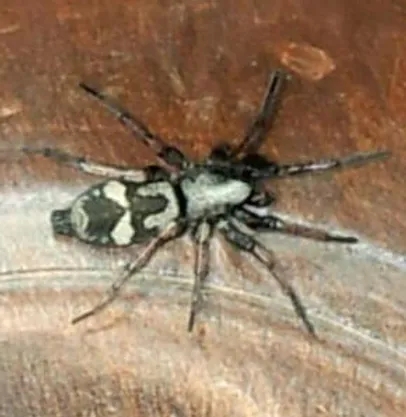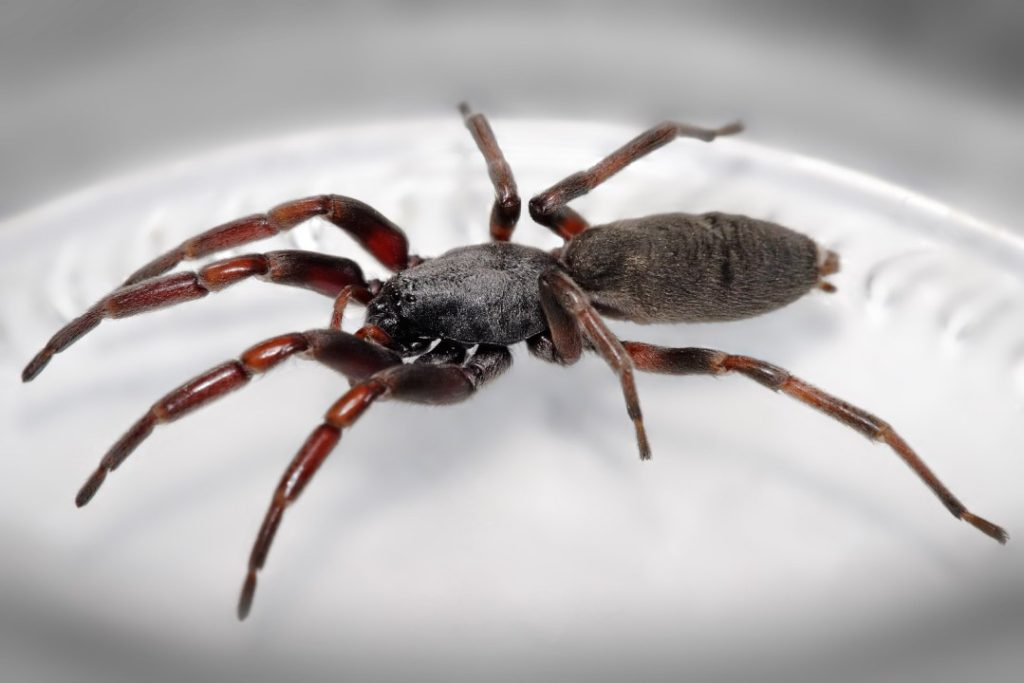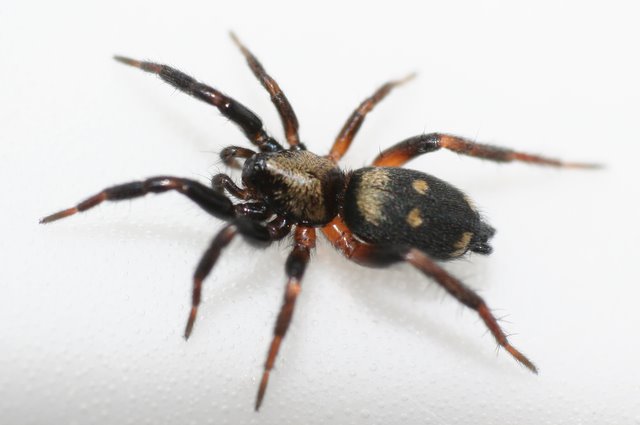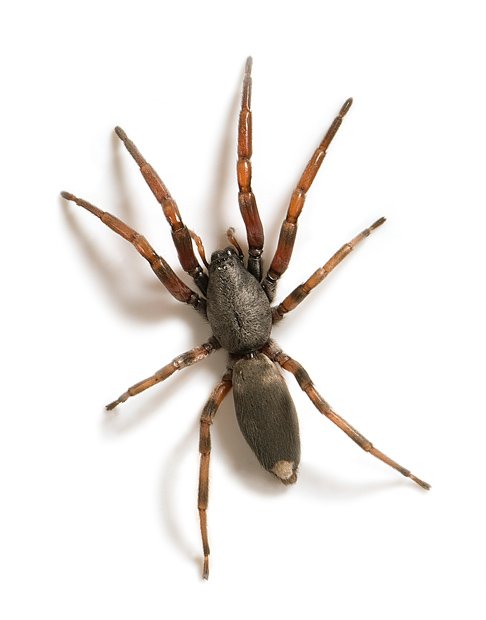Danger to humans
Few bites by these spiders have been reported and when they have, symptoms have been minor, consisting of a red welt and localised hot feeling for a couple of hours. They are not considered dangerous.

Ground spiders (family Gnaphosidae) are reddish, brown, gray, striped, black spiders, and include nearly 2,000 described species in over 100 genera, distributed worldwide. This makes the family the seventh largest known. New species are still being discovered. They are closely related to Clubionidae. Common genera include Gnaphosa, Drassodes, Micaria, Cesonia, Zelotes and many others. There are a few that are fairly common one is the Parson spider (Herpyllus ecclesiasticus) which is a blackish spider with white abdominal markings and measures about 13 mm.
Description:
Ground spiders are rather drably coloured, ranging from reddish, brown, charcoal grey to pinkish brown. Some, like Anzacia, have shiny, iridescent hairs. Typically they have large, cylindrical front spinnerets that are well separated from each other. The middle eyes in the rear row are usually angular rather than rounded in shape.
Habitat:
During the day, they hide under stones or logs. When they come inside of homes, they spend the day in dark, quiet places. People who are bitten by spiders often say that it happened when they picked up something that had been stored for a long time.
Spotted ground spiders don’t build a snare, but hunt and ambush ground dwelling insects. Like many spiders, little is known about their biology. Some species build burrows in the ground or shallow depressions, and build a palisade (fort-like structure) of vertically arranged twigs or leaves around the entrance. Some species, like Habronestes bradleyi, are closely associated with ants.

Prey: Ground spiders are nocturnal hunters. They forage aggressively for insects.
Web:
All ground spiders lack a prey-capture web and generally run prey down on the surface. They hunt at night and spend the day in a silken retreat.
Breeding:
Female ground spiders make a thick-walled egg sacs which is guarded by the mother until the spiderlings hatch.
Venom:
At present, no ground spiders are known to be seriously venomous to humans.
The stealthy ground spiders are small, usually less than one-half inch in length. There are more than 2,000 species recognized in this family. The anterior spinnerets are cylindrical and extend beyond the end of the abdomen. The abdomen is dark with a pattern of white banding. The cephalothorax is red-brown.

Ground Spiders – Gnaphosidae
This family contains a large number of varied spiders. Many species are dull brown with stocky legs, though some have bright patterns. They have quite distinct spinnerets that are of a uniform thickness (not tapering to a point), and are often positioned well apart, appearing as a two stubby tails from above. They are wandering hunters , and as the name suggests many species are found at ground level within leaf litter and beneath rocks and logs. They are mildly venomous and regarded as harmless spiders.

Behavior
While these spiders do spin silk, they do not trap prey within their webs. Rather, ground spiders hunt and chase prey along the ground. Hunting typically occurs outside, but ground spiders may also be seen in homes when temperatures drop significantly as they try to escape the cold.
Ground spiders produce silk through the use of their spinnerets, which are shaped like barrels. These glands are often instrumental in identifying ground spiders.
Ground spiders are nocturnal hunters. They do not make webs to capture prey. They forage aggressively for insects. During the day, they hide under stones or logs. When they come inside of homes, they spend the day in dark, quiet places. People who are bitten by spiders often say that it happened when they picked up something that had been stored for a long time. Shoes in closets are good hiding places for spiders.
